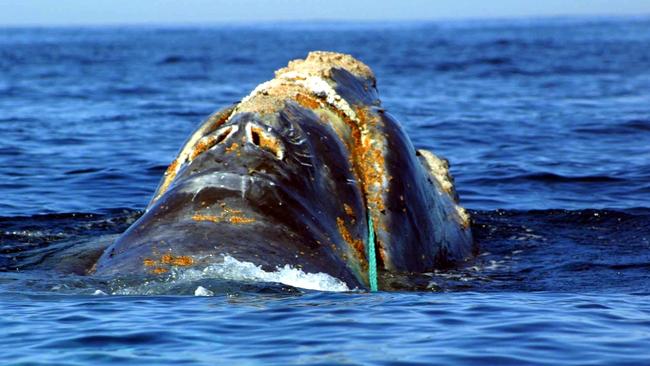Atlantic Ocean plastic levels ‘sub-lethal’
The Atlantic Ocean contains more than 10 times as much plastic as had been thought, research suggests.

The Atlantic Ocean contains more than 10 times as much plastic as had been thought, research suggests.
The amount of plastic waste entering the ocean globally would appear to be much greater than the eight million tonnes a year estimated in a 2015 study.
Scientists at the National Oceanography Centre in Southampton, Britain, collected samples at depths of about 10m, 30m and 200m at 12 locations in a line from Britain to the Falkland Islands.
They used a high-powered microscope to analyse the chemistry of samples to determine the types of plastic.
The average cubic metre of seawater was found to contain about 1000 particles of polyethylene, polypropylene and polystyrene litter, the three most common plastics that make up more than half of global plastic waste.
The particles ranged in size from about 30 microns, which is half the width of a human hair, to 0.5mm.
The scientists calculated that there were 12 million to 21 million tonnes of these three plastics in the top 200m of the Atlantic. A previous estimate suggested 17 million tonnes for the whole of the Atlantic.
Richard Lampitt, co-author of the study, said about 200 million tonnes of plastic was likely to be in the Atlantic, which has an average depth of 3000m.
He said that previous studies had tended to collect plastic using nets with a larger mesh size that did not catch the smaller, most abundant particles.
Earlier research also focused mainly on measuring plastic either on or near the surface or on the seabed, missing the plastic distributed throughout the water column. Some denser plastic particles do not float and others tend to sink when they become coated with bacteria, mould and slime, Professor Lampitt said.
The estimate of 200 million tonnes in the Atlantic is based on the concentration of plastic found at a depth of 200m, below the level where the waters are mixed by winds and currents.
Studies of the potential harm caused by ocean plastic waste have often used unrealistically high concentrations, Professor Lampitt said, with more research needed into its impact.
However, some types of plastic contained carcinogens and endocrine disrupters, which could be damaging even at low concentrations.
“Even if release of these toxins does not cause immediate harm, there is a definite possibility that prolonged sub-lethal exposure will cause significant damage to ecosystems and furthermore it will be impossible to repair this damage,” he said.
While the researchers studied plastic only in the Atlantic, they said it was likely that plastic waste in other oceans had also been grossly underestimated.
Rivers and storm drains in southeast Asia and Africa are thought to account for most of the plastic in the ocean. Other sources include discarded fishing equipment, eroding coastal waste sites and plastic particles carried by winds from land to the sea.
The Times



To join the conversation, please log in. Don't have an account? Register
Join the conversation, you are commenting as Logout